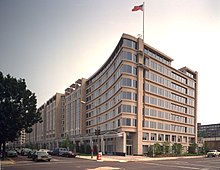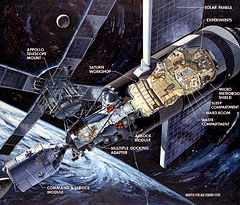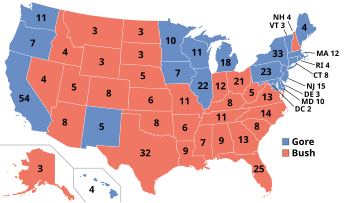User:AstroVictoria/sandbox
Appearance
This is just a sandbox for my alternate history, none of this is to be taken seriously
 | |
| Agency overview | |
|---|---|
| Abbreviation | NASA |
| Formed | July 29, 1958 |
| Preceding agency |
|
| Type | Space agency Aeronautics research agency |
| Jurisdiction | United States Federal Government |
| Headquarters | Washington, D.C. 38°52′59″N 77°0′59″W / 38.88306°N 77.01639°W |
| Victor Glover | |
| Deputy Administrator | Garrett Reisman |
| Primary spaceports | |
| Employees | 17,960 (2022)[2] |
| Annual budget | |
| Part of a series on the |
| United States space program |
|---|
  |
{{Italic title|string=Odyssey}} Template:Featured article is only for Wikipedia:Featured articles.
 The Space Shuttle Odyssey launching on STS-41D, its second flight to Skylab. | |
| Date | February 2, 1987 |
|---|---|
| Time | 9:41 am EST (14:41 UTC) |
| Location | Over Atlantic Ocean |
| Cause | RCC tile damage after failed RTLS abort |
| Outcome | Loss of Odyssey, shuttle fleet grounded for 23 months, all west coast shuttle mission replaced with Shuttle-C launches |
| Deaths |
|
| Inquiries | Ride Comission |
 Skylab as photographed by (Skylab 4). | |
 Skylab program insignia | |
| Station statistics | |
|---|---|
| Call sign | Skylab |
| Crew | 3 per mission (initially) 5-7 per mission (Space shuttle) (41 total) |
| Launch | May 14, 1973 17:30:00 UTC (51 years ago) |
| Carrier rocket | Modified Saturn V |
| Launch pad | Kennedy Space Center, LC-39A |
| Reentry | August 12, 1987 16:37:00 UTC |
| Mission status | Deorbited |
| Mass | 168,750 pounds (76,540 kg)[4] w/o Apollo CSM or Space Shuttle Orbiter |
| Length | 103.4 feet (31.5 m) w/o Apollo CSM or Space Shuttle Orbiter |
| Width | 55.8 feet (17.0 m) w/ one solar panel |
| Height | 43.3 feet (13.2 m) w/ power tower |
| Diameter | 21.67 feet (6.61 m) /OWS |
| Pressurised volume | 13,416 cubic feet (379.9 m3) |
| Atmospheric pressure | 5.0 pounds per square inch (34 kPa) Oxygen 74%, nitrogen 26%[5] |
| Perigee altitude | 269.7 miles (434.0 km) |
| Apogee altitude | 274.6 miles (441.9 km) |
| Orbital inclination | 50.0° |
| Orbital period | 93.4 minutes |
| Orbits per day | 15.4 |
| Days in orbit | 5231 days (6.6 years) |
| Days occupied | 1015 days |
| No. of orbits | 76,981 |
| Distance travelled | ~890,000,000 mi (1,400,000,000 km) |
| Statistics as of Re-entry August 12, 1987 | |
| Configuration | |
 Skylab configuration as planned | |
| Part of a series on the |
| United States space program |
|---|
  |
| |||||||||||||||||||||||||||||
538 members of the Electoral College[a] 270 electoral votes needed to win | |||||||||||||||||||||||||||||
|---|---|---|---|---|---|---|---|---|---|---|---|---|---|---|---|---|---|---|---|---|---|---|---|---|---|---|---|---|---|
| Turnout | 54.2%[6] | ||||||||||||||||||||||||||||
| |||||||||||||||||||||||||||||
 Presidential election results map. Red denotes states won by Bush/Cheney and blue denotes those won by Gore/Lieberman. One of D.C.'s three electors abstained from casting a vote for president or vice president. Numbers indicate electoral votes cast by each state and the District of Columbia. | |||||||||||||||||||||||||||||
| |||||||||||||||||||||||||||||
- ^ US Centennial of Flight Commission, NACA. Archived February 20, 2014, at the Wayback Machine. centennialofflight.net. Retrieved on November 3, 2011.
- ^ "Workforce Profile". NASA. Archived from the original on August 11, 2022. Retrieved August 11, 2022.
- ^ "NASA's FY 2023 Budget". The Planetary Society. Archived from the original on March 24, 2023. Retrieved July 27, 2023.
- ^ "EP-107 Skylab: A Guidebook". NASA. Retrieved February 28, 2017.
 This article incorporates text from this source, which is in the public domain.
This article incorporates text from this source, which is in the public domain.
- ^ Belew (1977), p. 18
- ^ "National General Election VEP Turnout Rates, 1789-Present". United States Election Project. CQ Press. Archived from the original on July 25, 2014. Retrieved February 21, 2023.
Cite error: There are <ref group=lower-alpha> tags or {{efn}} templates on this page, but the references will not show without a {{reflist|group=lower-alpha}} template or {{notelist}} template (see the help page).



